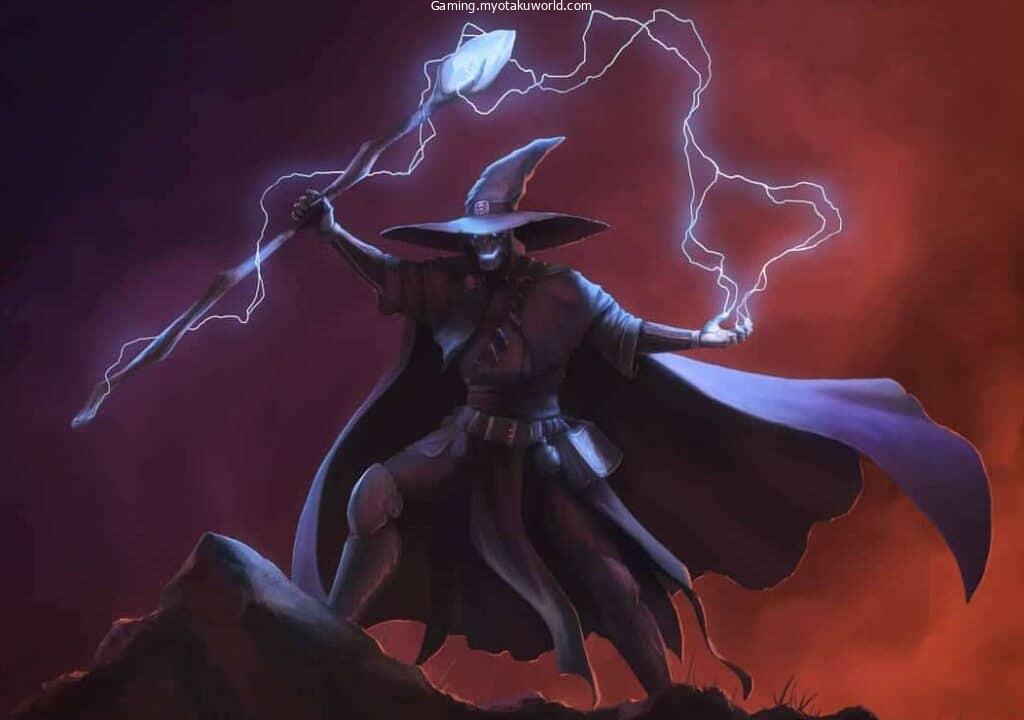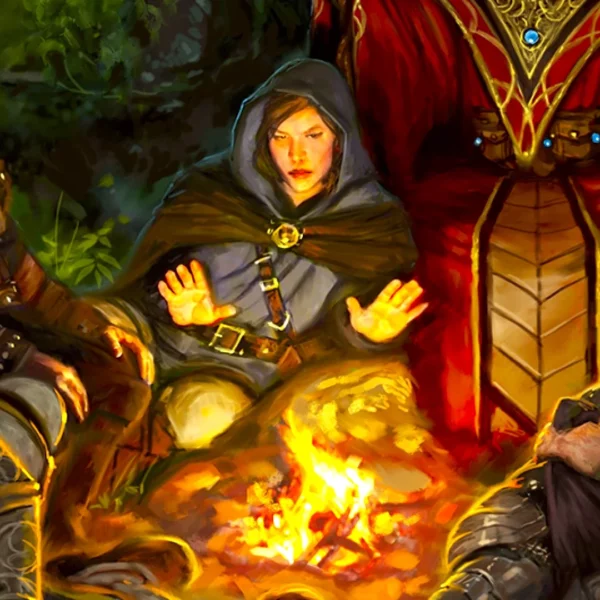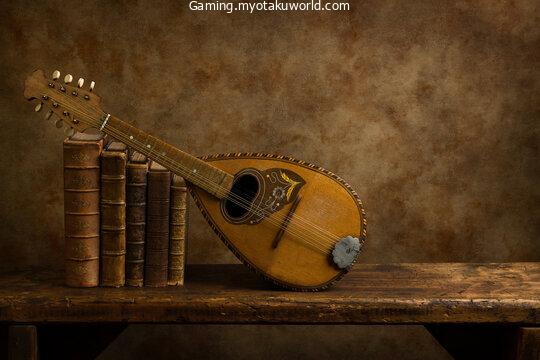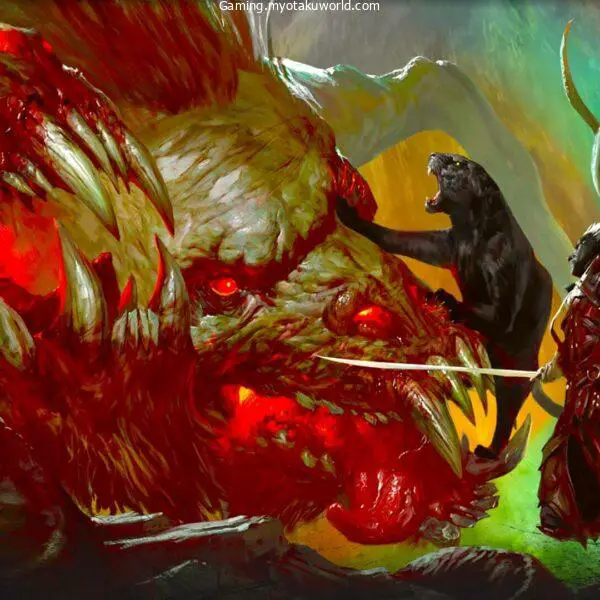Imagine that you and your friends are following a mysterious figure through the woods. Your party suddenly becomes obstructed by several weak goblins.
You must quickly get past the goblins to catch your target. You are a level 1 bard and you are looking for spells. What spell would you choose?
The Sleep spell is a great spell that you can use in such situations. Many consider it to be one of the most powerful spells.
It is available early in the DnD game and it is very useful, especially when dealing with multiple enemies at once. You can also use it if the opponent is close to death.
It is a powerful spell that can immobilize your enemies. It is a crowd-control spell that can change the tides in a battle. You may be hesitant about choosing this spell.
Read our “Sleep 5e Guide” to see if it is right for you.
What’s the Sleep spell?

This is the Official Description and Details of the Sleep Spell, taken from the Player’s Handbook page 276.
- Sleep
- First level Enchantment
- Casting time: 1 Action
- Range: 60 feet
- Components: V. S. M. (a little bit of fine sand or rose petals, or a cricket).
- Duration: 1 Minute
This spell puts creatures in a magical slumber. Roll 5d8 to determine how many creatures this spell can affect.
All creatures within 20 feet of any point within your chosen range will be affected in ascending order according to their current hit points (ignoring the unconscious).
Each creature that is affected by this spell falls asleep until it ends. The spell takes no damage.
Add each creature’s hit point to the total, then move on to the one with the lowest hit points. To be affected, a creature must have hit points equal to or lower than the total.
This spell doesn’t affect the undead or creatures that are immune to charms. Roll an additional 2d8 each time you cast this spell with a slot of 2nd or higher.
What is Sleep?
Sleep is a level 1 spell. Enchantment spells can be used to influence or control the behavior of others.
This spell can be cast as an action during combat. It can cause others to fall asleep for up to one minute, rendering them unconscious and prone. This is how it works.
- Check that you still have a slot available for your spells. To cast Sleep, you will need one. You only need one first-level spell slot to cast Sleep. However, higher-level spell slots can be used to make Sleep more powerful.
- Select the starting point for your Sleep spell. This is a limit of 90 feet. The D&D map uses square tiles to measure distance. This logic would allow you to reach 18 miles away. This is quite a range!
All creatures within 20 feet (or 4 tiles square) of the start point can be affected. You cannot control who is affected by your spell, so be careful when choosing the location.
All creatures within 20 feet of the spell’s starting location, except for a few, become its target. If you have allies located within 20 feet of the spell’s start location, they may also fall asleep.
- Roll 5d8 to get the total. Next, choose a location and roll 5d8, which is five eight-sided dice. Then, add the results. The total spell’s HP Pool is what we will call it. The DM should have this number. It is vital because it indicates how many creatures are affected by the spell.
- The DM should search for viable creatures with the lowest HP in their range. This is usually the responsibility of the DM unless they can also see each creature’s HP. Viable creatures are those creatures that can be affected with the Sleep spell. Inanimate creatures such as the Undead and creatures that are immune to charms are not viable.
- Add the creature’s HP to the HP Pool. The Sleep spell will end without affecting the creature if the difference is negative. If the difference is positive, the creature will fall asleep. The new HP Pool will be created. A creature that falls asleep is considered unconscious, and therefore no longer viable.
- Repeat steps 4 through 5. The spell will fail immediately if subtracting the creature’s HP from their HP Pool results in an error. The DM must then find the next creature within the range of the HP Pool with the lowest HP.
Remember that a creature that falls asleep awakens when: The spell’s duration ends (which takes a minute); the creature takes physical damage; or the creature is woken by another person as an act of slapping, shaking, or shaking them.
Sample scenario

Your character might be a bard who just woke up after a long sleep and is ready to fight. You cast the Sleep spell on your first encounter.
Roll 5d8 to get 30. There are four creatures that fall within the range of the Sleep spell. We will call them creatures A, B, and C.
Creature B has 11 HP; creature B has 9 HP; C has 12 HP, and D has 8 HP. Let’s go over the steps.
- Your bard has just awoken from a long sleep and is now facing the world for the first time. He uses the spell slot.
- Creatures A,B, and C are 45 feet from each other. The distance between them would be approximately 5 ft. Creature D is 30 feet away from Creature A, so they are not in close proximity. You can select the location where Creatures A, B, and C can be affected. They are both within the 90-foot range and close together except for Creature D. This spell will not affect Creature D.
- You can roll 5d8 to get 30, as well. The HP Pool will now have 30.
- The next step is to find the creature that has the lowest HP. Creature B is the lowest, with only 9 HP.
- Then subtract Creature A’s HP from HP Pool (30-9 = 21). Creature B will then fall asleep and become unconscious because the difference (21) was a positive number. The new HP Pool would then have 21.
- Creature A with 11 HP is the next creature to have the lowest HP. The same steps are used to calculate the difference in step 5. (21 – 11 = 10) It is a positive number, so Creature B will go to sleep and the new HP Pool will be 10.
Creature C would be the next creature with 12 HP. The negative number (10 – 12, = -2) is generated if you repeat the steps in step 5. This means Creature C won’t fall asleep, and the spell is over.
Higher Levels
You can cast Sleep using a level 1 spell slot because it is an enchantment spell. You can cast the spell with a higher-level slot.
However, for every level beyond the 1 level, the spell slot you use will add 2d8 to your 5d8 roll.
For example, if you have a 2nd- level spell slot for Sleep, you will roll 7d8. 5d8 + 2d8 =7d8. It becomes 9d8 if you use a 3rd-level spell slot.
This is useful when you want to appease multiple creatures or when you need to pacify one monster with high HP.
Who can Sleep?

Three main classes may have the Sleep spell in them:
- Bard
- Sorcerer
- Wizard
The Bard and Sorcerer can use a limited number of spells, depending on their level. They can however pick up the Sleep spell at level 1 since it’s a first-level enchantment.
They can also replace an existing spell with a new one every time they level up.
If you don’t have the Sleep spell, you can easily change it by gaining a level in your class. The Wizard can prepare spells equal in intelligence to their level + wizard level.
If the equation returns a value of 0 or lower, it means that the character can only prepare one spell.
Subclasses
The Sleep spell can be used by other classes through their subclasses. These subclasses include:
- Aberrant Mind Sorcerer (from Tasha’s Cauldron of Everything).
- Arcane Trickster Rogue (from Player’s Handbook).
- Archfey Warlock (from Player’s Handbook).
- Eldritch Knight Fighter (from Player’s Handbook).
- Redemption Paladin (from Xanathar’s Guide to All)
- Twilight Cleric (from Tasha’s Cauldron of Everything).
How great is sleep?
The Sleep spell is a favorite among veterans and newcomers alike. It is also very easy to use early in the game because it is a level 1 spell.
It’s a powerful crowd-control spell. It is non-lethal, even though it may hit your friends. You can just wake them up.
The average roll of a 5d8 is between 22-23, which is quite large for creatures with lower HP. The “unconscious” condition occurs when a creature falls asleep.
Unconscious
These are the details taken from the Player’s Handbook page 292:
- A conscious creature that is unconscious is unable to move or speak and is unaware of its surroundings.
- The creature throws whatever it has and falls to the ground.
- The creature automatically fails to make Strength or Dexterity saving throws.
- An advantage is gained by attacking the creature.
- If the attacker is less than 5 feet from the creature, any attack is considered a critical hit.
Incapable means the creature is unable to take any action or react. Attacking a creature that has fallen asleep is considered to be unconscious.
It is an advantage for attackers and an automatic critical hit as long as they are within 5 feet. A critical hit is usually achieved by double the normal number of dice used in an attack.
For example, 2d4 damage is dealt with a creature that has fallen asleep if it is attacked with a dagger instead of 1d4.
Many DMs will allow players to roll a 1d4 roll and have the damage doubled. It’s up to the DM how they do it.
They automatically fail if spells require strength or dexterity saving throws. They automatically fail in situations that require throws. This spell is fun and can be extremely useful in a situation.
FAQs
How long does sleep last?
The Sleep spell lasts one minute. Each round of combat lasts six seconds. Therefore, Sleep would last ten rounds.
Is Sleep good for you?
Yes, for many. Although it is a subjective question to answer, many people view the spell as a crowd control spell. It is also accessible at an early stage of the game since it is a first-level spell.
How can you make Sleep more comfortable?
Sleep is cast by using at minimum a level one slot in your spellbook. Roll 5d8 to determine how many creatures are affected by the spell. You can also use Sleep spell slots of a higher level; simply add 2d8 to each level above level 1.
Are Elfs able to sleep?
Yes. Elfs are not susceptible to charms.
Are undead immune from Sleep?
Yes.
How can you get up from sleep?
A creature may wake up from sleep after one minute of being cast, by taking damage, or by having someone else wake it up as an action.









